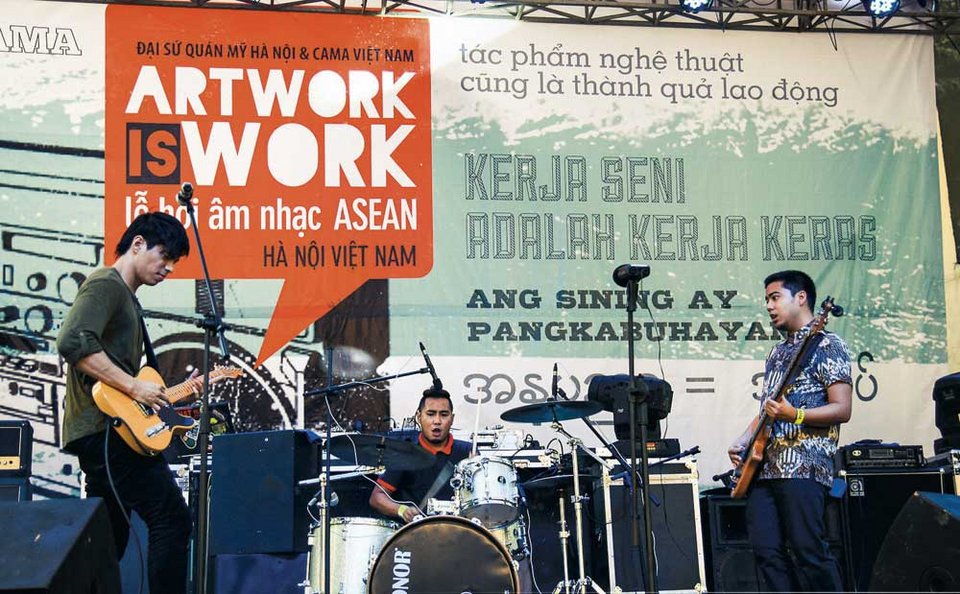A Guide to Hanoi's Old Quarter
Eating, drinking and getting lost in the heart of Hanoi.
With its narrow, winding streets lined with time-worn French colonial townhouses and those peculiar, precarious-looking “tube houses” (some as slender as two meters, as deep as 70 meters and as high as seven floors), its historical monuments and its up-market shopping outlets, the Vietnamese capital’s Old Quarter is brimming with more than 1,000 years of history. The labyrinth of some 36 streets between Hoan Kiem Lake, the Red River and what remains of the Hanoi Citadel is best explored by foot. That’s if you can come to terms with the organized chaos of Hanoi’s traffic-gnarled streets, where motorbike dodging is a fine art.
Street Life
The oldest surviving district in Vietnam, the Old Quarter was originally a giant marketplace laid out according to 36 guilds (silk, incense and fish to name but three), each of which occupied their own street. (This legacy still lives on with the likes of Hang Dau Street, known as “shoe street.”) While perhaps lacking the nascent glitz of Ho Chi Minh City in the country’s South (see our story at bit.ly/14UarpW), Hanoi seamlessly combines the old and new, and all manner of food, drink and trinkets (from propaganda posters to personalized tombstones) can be found in the Old Quarter.
Test Your Tastebuds
Eating out is a big deal in Hanoi. Everyone knows pho and banh mi, but there are many more Northern recipes worth a try. One of the more unique dishes is cha ca, fried freshwater fish with herbs and spices, made famous by the century-old Cha Ca La Vong (14 Cha Ca St.). There’s no menu and the staff speak little English, but this doesn’t matter since they only serve one dish. Armed with fresh basil, dill and scallions, vermicelli and various condiments, you’re given an electric cooker and a skillet with which to do some DIY tabletop cooking. The results are, well, divisive; some are taken in by the subtle flavors, others say it isn’t worth the relatively hefty 170,000VND per person. Still, given its history, it remains one of those dishes you have to try at least once. Bun dau mam tom (vermicelli with bean curd and shrimp sauce) is another less-heralded local dish. Simple but flavorful, it’s salty, sweet, sour and spicy at once, a lunch-time fave for locals and an acquired taste for visitors. Try the back alleys between Ba Trieu and Hang Khay streets, which are packed out with office workers. Western fare is everywhere, but for some solid tapas and a long list of tasty sandwiches in a refined European ambiance, try La Salsa (25 Nha Tho St.).
Coffee Clubs
With Vietnam second only to Brazil in terms of coffee production, it’s no surprise that cafes can be found at every turn in Hanoi. Here, your coffee drips through a small aluminum filter into a short glass of sweet condensed milk. The result is a thick, teeth-chattering brew that’s intended to be lingered over, then followed with a green tea chaser. Join the throng of students and first-jobbers in ordering a ca phe sua da (iced coffee with condensed milk) or tra chanh (iced lemon tea) and surveying the street scene from the low plastic stools out front of one of the dinky coffee joints near St Joseph’s Cathedral (40 Nha Chung St.). For a cuppa with a view, Café Pho Co, or Hidden Café (11 Hang Gai St.), offers a balconied retreat from the hustle and bustle below. Signless, seemingly nameless, it’s one of those places you really need to seek out. Make your way through the typical trinket shop out front and up the skinny staircase and be rewarded with a wonderful view of Hoan Kiem Lake and a delicious egg white coffee.
Prefer a more conventional cappuccino? Opened in 2011, the Hanoi Social Club (6 Hoi Vu St. www.facebook.com/TheHanoiSocialClub) not only serves as good a Western-style espresso as you are likely to find in Hanoi (do try the ginger crunch shortbread, too), but the expansive old three-story villa has also become a hub for the city’s hip and creative set, drawn by its many couches and sun-dappled terrace. During our last visit, we were privy to what was billed as “Hanoi’s first ever bluegrass performance,” while the place has also hosted ukulele and djembe workshops, and theatrical events. There’s also a pretty heavy social responsibility angle: the menu is filled with healthy, organic options, and the café employs chefs from KOTO, a not-for-profit vocational training school for disadvantaged youth.
Beer Ahoy
Bia hoi: it can be found on practically every Hanoi corner, where it’s downed in considerable quantities, sometimes with food, oft with a blaring TV soundtrack for company, and always with plenty of cheery banter. Though ridiculously cheap at about 5,000VND a pop, this light and refreshing unpasteurized beer, brewed daily and served in humble plastic cups, is not just for budget travelers. Rather, it offers the perfect chance to get street-side and chew the fat with locals and fellow tourists of all walks. It’s no coincidence that arguably the beating heart of the Old Quarter, the intersection of Luong Ngoc Quyen and Ta Hien streets, is referred to as “bia hoi corner.” As bia hoi production is unregulated, it tastes different from vendor to vendor and day to day, even hour to hour—all the more reason for bar-hopping. Not far from here, along Hàng Giay Street, are a series of tourist-friendly bars that do two-for-one deals on potent cocktails, while for a more elevated evening, new bar and art space Umbrella (61 Mah May St.) features an edgy interior and a bass-heavy soundtrack. Other popular nightspots are to be found in Ba Dinh (try the kitsch hipster haunt Bar Betta [34C Cao Ba Quat St.]) and Tay Ho districts. While travel guides typically tell you that all bars close at 12am, this is not strictly true, as revelers need only keep an ear out for muffled bass and off-key crooning to track down that night’s make-shift speakeasy.

Experimental Viet Set
In recent years, Hanoi’s live music scene has exploded, welcoming more and more diverse international acts, including those from neighboring countries. Earlier this month, the city hosted the very first Artwork is Work: ASEAN Music Festival, a celebration of creative Southeast Asian youth culture. It featured performances by bands from Myanmar, the Philippines, Singapore and our very own traditional Thai funk act The Paradise Bangkok Molam International Band, as well as markets and a visual arts center. The event’s in-the-know organizers, CAMA Vietnam (www.camavietnam.org), head a list of dedicated promoters shining a light on thought-provoking art and independent music. Check their website for upcoming events.
ESSENTIALS
Getting There
AirAsia, Qatar Airways, THAI Airways and Vietnam Airways operate direct flights from Bangkok to Hanoi.
Where to Stay
The Old Quarter is home to plenty of decent mid-range hotels offering rooms at reasonable prices. Many also pad out their deals with free airport pick-up and complimentary breakfasts. What sets apart a place like The Jasmine Hotel (57 Lo Su, Hoan Kiem. www.thejasminehotel.com), however, is the endearing staff who need little encouragement to whisk you away for some bia hoi, an impromptu game of football, or to somewhere in the idyllic countryside. Its location right by Hoan Kiem Lake is pretty helpful, too, and staff will happily organize tours to out-of-town attractions like Ha Long Bay and Sapa.
Currency
B1 = VND700 (Vietnamese Dong)
| Address: | A Guide to Hanoi's Old Quarter, Hanoi, Vietnam |
| Report a correction | |










